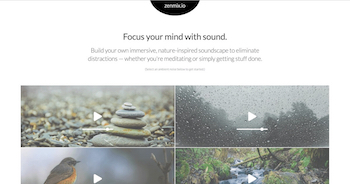Mindfulness and Emotions
Which came first: thought or emotion? Physiological reaction or emotion? What causes what? In which order?
Emotions are very tricky when it comes to their definition. There are many theories of emotions, however, here are the key parts of experiencing emotion: feeling and being aware of the feeling, a motivational part, a physiological response (e.g. the racing heart) and, a motor response. On the other hand, the terms “emotion” and “feeling” are sometimes used interchangeably. However, here’s the explanation of feelings by Antonio D’Amasio, professor of neuroscience at The University of California:
“Feelings are mental experiences of body states, which arise as the brain interprets emotions, themselves physical states arising from the body’s responses to external stimuli.”
Emotions and feelings are the vital parts of our lives and by understanding them via mindfulness practice we will improve our well-being and connection with ourselves and the world around us.
Get Back in Touch With Your Body
Being in direct contact with an emotion means feeling it in the body. Here are the simple steps that can help you get in touch with your emotions and body sensations by observing and recognizing them without any judgement.
1. Mindfulness of Breath
Find a quiet place where you won’t be disturbed. Sit or lie down in a comfortable position. Close your eyes and focus on your breath. Take a few moments to observe the path of your breath as it is flowing in and out of your body. If the distracting thoughts pop up in your mind, observe them as they are and let them go. Return your attention back to the sensation of breathing.
2. Body Scan
Be aware of each part of your body by going from the toes up to the head: your toes, feet, ankles, lower legs, knees, upper legs, pelvis, the whole pelvic region, hips. Then, quickly move your attention to stomach area, chest, heart, shoulders, upper arms, elbows, lower arms, wrists, hands, palms, fingers. Keep observing your neck, chin, jaws, face and the entire head. Allow the emotions to arise in the body and notice the sensations that may go with them. Be aware of your entire body and allow them to flow through your body.
3. Ask Yourself Questions
As you come in contact with your present moment feelings and sensations with no resistance, you may notice how they begin to change. You can ask yourself: “Where in my body do I feel the most uncomfortable feelings or sensations? Where in my body do I feel the most comfortable feelings or sensations?” Simply be with whatever you experience in the present moment without creating a story around it.
Connecting with your feelings and sensations may be diffilcult at the beginning, however, the regular mindfulness practice is there to help you tune into them more effectively. Also, one of the ways is to recall a memory from the past e.g. when you felt happy. Then, you can ask yourself: “How does ‘’happy’’ feel like in my body? “Which part of my body is the location of happiness?” Without judging your experience of happiness you allow yourself to feel it as it is. Allow the accompanying sensation to flow through your body. In this way, you can recall other pleasant or unpleasant emotions and feelings as well and witness their transient nature and release.
If you feel uncomfortable at any stage, take a pause and continue with your practice when you’re ready. Also, if you experience overwhelming emotions or you feel that you need to work more on your emotional life, please consult with the experts.
Keep Track of Your Emotions
On a daily basis, keeping track of our emotional life by journaling, especially when we get emotional is very useful for improving it. For a month or so, we can type down as many details as we can by collecting them from the situations when we act emotionally. After that, we can analyze them and find the repeated patterns of our behaviour and the potential triggers. In this way, we get to know ourselves better, choose how and, whether we will participate in an activity or situation that may trigger us emotionally.
Learn How to Mindfully Respond, Not React
Now, imagine this scenario: Your job is suffering because of your coworker’s behaviour. They refuse to acknowledge they’ve made a mistake and the situation gets worse and you feel that you’re going to explode with anger…
Does this sound all too familiar? We’ve all been there.
Our life experiences, memories, beliefs and various conditioning play the important role in our reactions to the world and ourselves. Since we want to have more choice in the moments when we are about to become emotional, the continuous mindfulness practice can help us notice the arising of impulse and expand the gap between impulse and action. Therefore, we are choosing our response and how we feel in those situations.
The more we are emotionally conscious, the more we become open to developing and improving our emotional skills (also sometimes referred to as emotional intelligence, EQ). Emotional intelligence is the ability to identify, understand and manage our own emotions and the emotions of others. It includes the skills such as self-confidence, taking responsibility for our own feelings, resilience, empathy, kindness, relationship skills, emotional regulation, being proactive and other.
“People with well-developed emotional skills are also more likely to be content and effective in their lives, mastering the habits of mind that foster their own productivity; people who cannot marshal some control over their emotional life fight inner battles that sabotage their ability for focused work and clear thought.”
Daniel Goleman, Emotional Intelligence
So, what will happen to you if you start embracing all your feelings?
[jr]
REFERENCE:
http://bigthink.com/experts/antoniodamasio Goleman, D. (1995). Emotional intelligence: Why it can matter more than IQ. New York: Bantam Books.
Previous: Editorial







